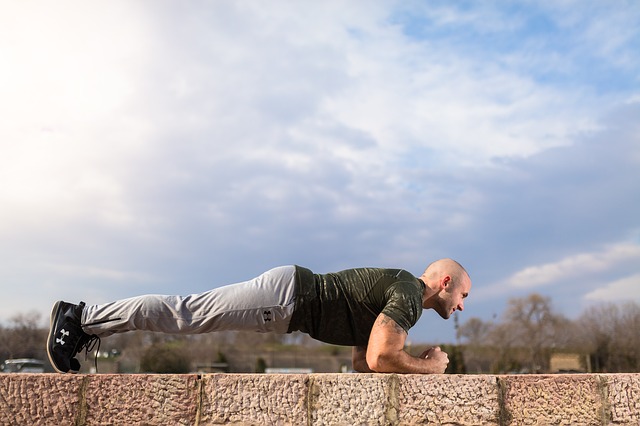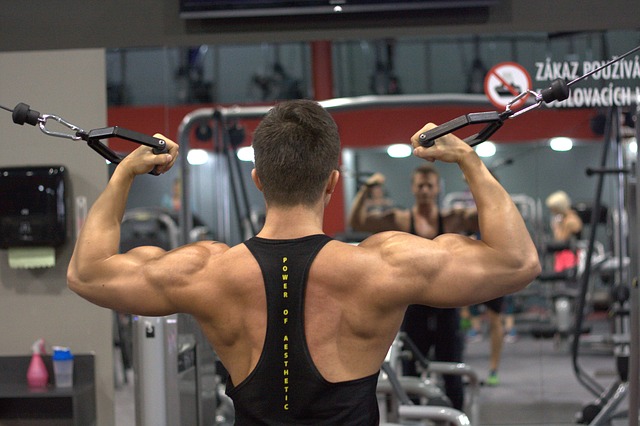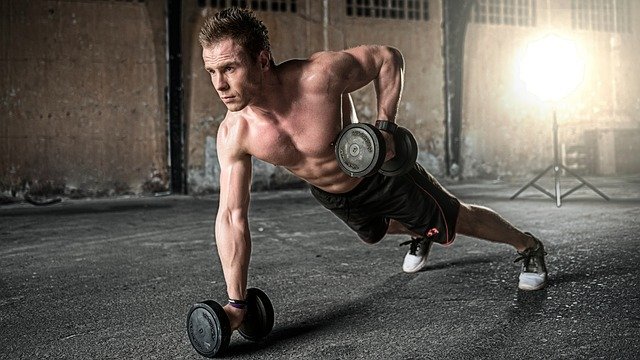What amino acids are the building blocks of protein?

What amino acids are the building blocks of protein?
Do you know which of the amino acids is frequently used by dieters and bodybuilders to build muscle tissue? Amino acids are the chemical components that are the basic elements of proteins. Each Amino acid performs specific functions in the body. The benefits of Amino acids are numerous and varied and will be discussed in this article, especially with regard to the benefits for bodybuilders.
To understand the importance of these chemicals, you must understand how important proteins are to life. Proteins are found in every living organism, from the largest animal down to the tiniest microbe.
Proteins form the structure for every living creature. The proteins making up the body are not derived from dietary sources. The body breaks down dietary protein into its Amino acid components, which the body then uses to create the proteins it needs.
In its various forms, protein participates in numerous chemical processes necessary to maintain life. They assist with the transportation of oxygen, the contraction of muscles, and with the exchange of nutrients between intracellular fluids and body tissues, blood, and the lymphatic system.
Next to water, protein is the most abundant substance in the human body. It is found in muscles, tendons, bones, hair, nails, organs, and glands.
There are twenty of these acids found in protein. Of these twenty, humans can produce 10 of them, with the remainder supplied in foods.
The 10 acids that humans are unable to produce are called essential acids. Failure to obtain even one of these chemicals causes a degradation of the proteins in the body. Unlike fats and starches, these chemicals are not stored for later use.
The remainder of these amino acids is considered to be unessential. This means they do not need to be obtained through the weight gain diet as the body can manufacture them on its own.
Branched Chain Amino Acids (BCAAs)
Branched chain amino acids (BCAAs) are three essential amino acids, including Leucine, Isoleucine, and Valine. They can be easily obtained from protein foods and are the three most important amino acids in the manufacture, maintenance and repair of muscle-tissue.
First on our list of essential Amino acids is Isoleucine. Isoleucine helps with the formation of hemoglobin and regulates levels of sugar in the blood. It also participates in the formation of blood clots.
Our next item is Leucine. Leucine is another branched-chain acid that protects muscles and acts as fuel. If also helps to build muscle tissue and is commonly used by bodybuilders for this purpose.

It promotes the healing of muscle, bone, and skin after traumatic injury.
The last Branched-chain Amino acid is Valine. Valine is needed for muscle metabolism and for tissue repair and growth.
It is useful in treating a deficiency of Amino acids occurring as a result of drug dependency.
The Other Amino Acids
The next amino acid we will discuss is Alanine. Its main function is to help the body metabolize Tryptophan and Pyridoxine.
It helps the body to metabolize glucose, a simple carbohydrate the body uses for energy.
Next we have Arginine. Arginine promotes immune system function by increasing the size and activity of the Thymus gland, which produces white blood cells called T-Cells.
Arginine is used to make a chemical called Nitric Oxide.
Nitric Oxide causes the blood vessels to relax and may help with conditions such as Atherosclerosis, Intermittent Claudication, and Erectile Dysfunction.
The next item in our list is Asparagine. Asparagine helps the nervous system to maintain a calm equilibrium. In other words, it helps prevent you from becoming overly excited or overly calm.
It helps the body to metabolize ammonia. It is considered to be a nonessential Amino acid.
Next we have Aspartic acid. Aspartic acid helps to increase stamina and combat fatigue. It is sometimes used as a treatment for Depression.
Chronic fatigue may result from low levels of Aspartic acid.
On a cellular level, it assists with the functions of RNA and DNA, which carry genetic information.
Our next item is Cystine. Cystine is involved in the production of collagens, which is the main protein of connective tissue.
It is necessary for proper utilization of Vitamin B6 and helps heal burns and wounds.
It promotes healing after surgery and severe burns.
Now we have Glutamic acid. Glutamic acid is converted to Glutamine where it functions as a neurotransmitter.
It is useful for metabolizing fats and sugars.
It helps transport potassium across the blood-brain barrier into the central nervous system.
Glutamine is our next Amino acid, and there are benefits to taking l’glutamine. Glutamine easily crosses through the blood brain-barrier into the brain where it is used for fuel.
It is frequently use by dieters and body builders to build muscle tissue.
Next on our list is Histidine. Histidine is an essential Amino acid that helps with the growth and repair of various tissues.
It helps to maintain the myelin sheaths, a protective outer layer covering the axons of neurons in the nervous system.
The next item in our list of Amino acids is L-lysine. Lysine is necessary for proper bone development and growth in children.
It helps with the production of hormones, antibodies, and enzymes.
L-lysine is used as a treatment for lesions of the mouth and genital regions caused by the herpes simplex virus.
Next on our list is Methionine. Methionine helps to prevent fat buildup in the arteries and liver that might block blood flow to essential organs.
It is a beneficial antioxidant as the sulfur in it neutralizes free radicals. Some studies have shown it may help improve memory.
The next item in our list of Amino acids is Phenylalanine. Phenylalanine is an essential acid that, once inside the body, can be converted into Tyrosine, which is needed for the production of the neurotransmitters Dopamine and Norepinephrine.
Phenylalanine is a neurotoxin and high levels of it can lead to cellular death in the brain. It constitutes half of the artificial sweetener Aspartame, a sweetener that is found in diet sodas.
One animal study has shown it may be a useful treatment for Parkinson’s disease. More research in this area needs to be done.
Next we have Proline. Proline helps keep skin healthy by assisting with the production of collagen.
It works to maintain and heal cartilage, which makes it useful for conditions such as Osteoarthritis.
Next is Serine. Serine helps the body to properly metabolize fats and fatty acids.
It assists with the production of immunoglobulins. Immunoglobulins play an important role in the immune response, by destroying foreign substances such as bacteria.
We now come to Threonine. Threonine is an acid that helps to maintain a proper balance of proteins in the body.
It helps produce elastin and collagen, two elements needed for healthy skin.
As it is found in the Central Nervous System, it may be helpful in treating some types of Depression.
Our next Amino acid is Tryptophan. Tryptophan is used by the body to produce Serotonin which is needed for normal sleep.
It helps to alleviate insomnia, as it is a natural relaxant.
It helps the immune system to function properly and minimizes the severity of Migraine headaches.
As it helps to produce Serotonin, it may help with certain types of Depression.
Our last Amino acid is Tyrosine. Tyrosine is a precursor to the neurotransmitters norepinephrine and dopamine, which function as mood elevators.
A deficiency of Tyrosine may result in inadequate amounts of norepinephrine in the brain that may lead to Depression. It increases alertness while simultaneously fighting fatigue.



